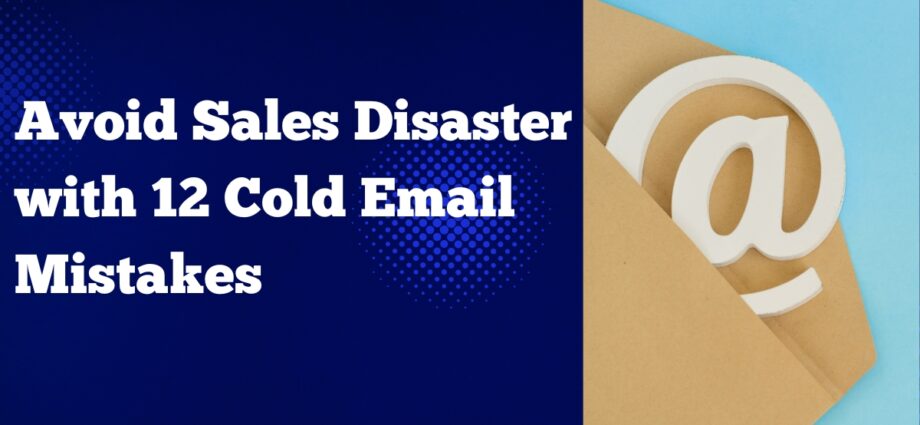As the world of business moves more and more online, it’s become increasingly important to have a strong digital marketing strategy – and that means knowing how to avoid some common mistakes. One area that’s often mistake-prone is cold emailing, which is when you contact potential customers or partners who don’t know you yet. If you’re going to be successful with cold emailing, you need to avoid these twelve mistakes:
Here are 12 common cold email mistakes to avoid in order to ensure a successful sales conversation:
Not Personalizing The Email
Personalizing your emails shows that you have taken the time to research your potential customer and understand their needs. A generic email will not stand out from the hundreds of other emails that a recipient receives each day.
Being Too Salesy
The main goal of a cold email is to start a conversation, not to make a sale. Avoid using aggressive sales language and instead focus on building a relationship with your potential customer. Offer valuable information or insights that can help them solve a problem they are facing.
Not Having A Clear Call To Action
A call to action is an essential part of any email and should be included in all cold emails. It could be as simple as asking the recipient to reply to the email or scheduling a call with you. A clear call to action will increase the chances of getting a response.
Sending The Email At The Wrong Time
Timing is critical when sending cold emails. Consider the time zone of your recipient, their work schedule, and the type of business they are in. Sending an email at a time when the recipient is unlikely to be checking their email will result in your email going unnoticed.
Not Keeping The Email Short and Sweet
Cold emails should be short and to the point. Long emails are likely to be ignored or deleted. Keep your email concise and focused on the main message you want to convey.
Ignoring The Spam Filter
The spam filter is an automated system that filters out unwanted emails. To ensure that your cold email is not filtered as spam, avoid using certain words and phrases that are commonly used in spam emails. Also, make sure to include a clear subject line that accurately reflects the content of the email.
Not Having A Clear Purpose
Another mistake you can make when sending a cold email is not having a clear purpose. Your email should have a specific goal, such as scheduling a meeting or getting feedback on a product. Without a clear purpose, your email will likely be ignored or deleted.
Not Providing Value
In order for your email to be successful, you must provide value to the recipient. This can be in the form of helpful information, an interesting article, or an exclusive offer. If you do not provide value, your email will likely be deleted without being read.
Failing To Follow Up
Many salespeople make the mistake of failing to follow up with their contacts after sending a cold email. If you do not hear back from the recipient within a few days, it is important to follow up with them. This shows that you are interested in doing business with them and that you are persistent. Most people are busy and may not have time to respond to your initial email right away, so following up is essential.
Sending Too Many Emails
Another mistake that salespeople make is sending too many emails. It is important to space out your emails so that you do not become annoying or overwhelming to the recipient
Poor Subject Lines
Your subject line is the first thing recipients will see, so it needs to be attention-grabbing and relevant. A good subject line will make recipients want to open your email, while a bad one will cause them to hit delete.
Making Spelling And Grammar Mistakes
This one might seem like a no-brainer, but you’d be surprised how often people make simple spelling and grammar errors in their emails—especially when they’re rushing through them. So, take the time to proofread your messages before hitting send. A few extra minutes can make all the difference in how professional you come across.
Read More:- Leadership Training
Conclusion
Cold emailing is a powerful tool to reach potential customers and convert leads. Cold emailing is harder than most communication for two reasons. But, it’s important not to get sidetracked in the process. To ensure your emails are successful, personalize them for each recipient, keep sales ness at bay, make sure there’s an inviting call-to-action included; send within optimal timing windows; edit down so you only include what matters most — while mindfully avoiding filters that can block out all of your hard work! You can use a sales enablement tool to avoid the above mistakes. Follow these strategies and watch conversion rates go through the roof!

